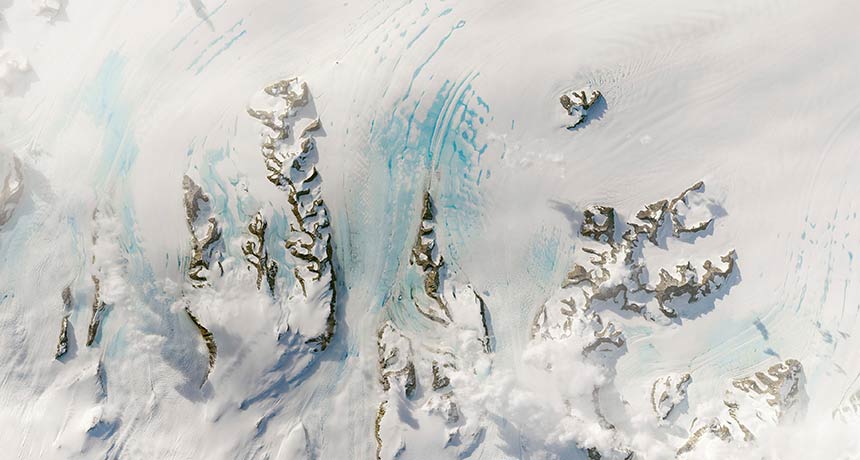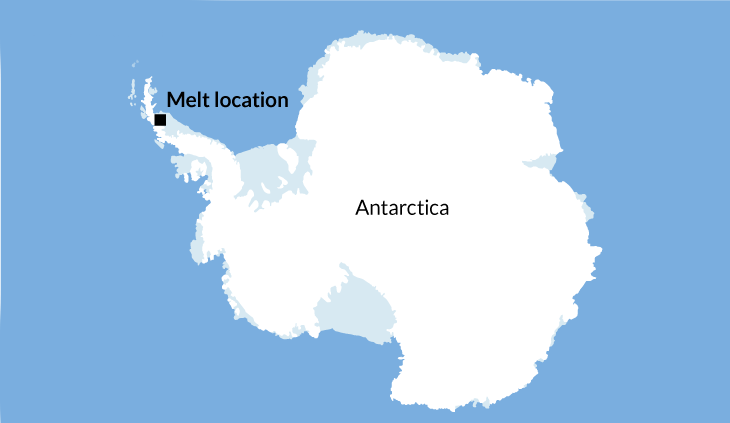Warm, dry winds may be straining Antarctica’s Larsen C ice shelf
Autumn melting could be a warning sign

WINDS OF CHANGE A satellite image from March 2016 shows the blue streaks of unseasonably late snowmelt on the Larsen C ice shelf that was caused by warm winds cascading down mountain slopes on the Antarctic Peninsula.
Lauren Dauphin/NASA Earth Observatory







